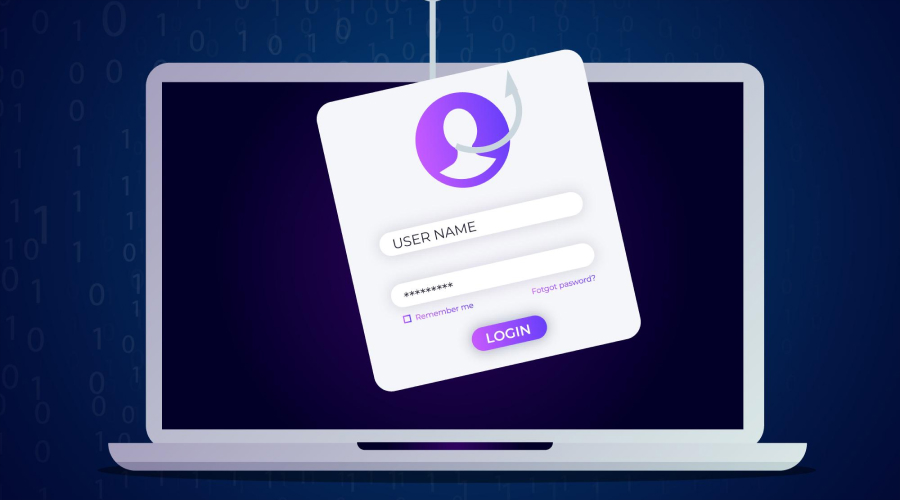
By the end of 2024, the cybersecurity threats can cost the USA more than $452 billion. This uptick in numbers is a serious concern as organizations, individuals, corporations, and government facilities’ reputations are on the verge of risk. Furthermore, if cyberattacks are successful in exploiting vulnerabilities, they may cause irreversible financial damage. Fear not! With a proper understanding of online threats, you can mitigate the risk to a great extent. Hence, let’s delve into the following article to learn about the top 10 cyber security threats along with their causes and preventative measures.
Table of Contents
- What is Cyber Security Threat and Its Impact on a Business?
- Causes of Cyber Security Threats
- Lack of Security Features
- Advanced Technology
- Human Error
- No Cyber Security Training
- Being Unaware of Different Kinds of Malware Attacks
- Top 10 Cyber Security Threats
- Ransomware Attack
- Security Misconfigurations
- Artificial Intelligence Cyberthreats
- Phishing
- Distributed Denial of Service (DDoS)
- Credential Stuffing
- Third-Party Exposure
- Social Engineering
- IoT Based Attacks
- Injection Attack
- How to Prevent Cyber Security Threats
What is Cyber Security Threat and Its Impact on a Business?
A cybersecurity threat is a malicious action performed by internet bad actors or cyber criminals to cause damage to your system or software. Undoubtedly, any such act is done to cause damage or steal information or money. Cyber security threats are performed with the intent of damaging business operations, brand, and reputation. These threats have the potential to cause a financial scam in no time. Such a threat may negatively manipulate or distort data and block access to the entire software, technologies, and system. Vulnerabilities in the entry points of any software or programs encourage an uptick in the number of cyberthreat instances. Essentially, exploited data/password integrity, confidentiality, and availability are the root causes of cyber security threats.
What shall you do?
First of all, you should be aware of the causes of cyber security threats. Only then would you be able to take measures to prevent them! Read the upcoming section for the causes…
Causes of Cyber Security Threats
Cyber security threats are designed to target any industry, including the healthcare sector, financial organizations, retail industries, manufacturing, and government facilities. Check out the following causes that contribute to the occurrence of these nefarious instances:
1. Lack of Security Features
A lack of security configurations, such as failing to install VPN, firewall software, and no advanced data security layers, can make an organization vulnerable.
2. Advanced Technology
The rapid growth of technology has prepared more advanced bad actors. They are efficient in accessing and selling databases on dark web marketplaces, foreign illegal sites, and more.
3. Human Error
Employees’ negligence can result in access to the organization’s sensitive information and compromise security. Most often, they accidentally overlook the real intention of phishing emails and download malware files.
4. No Cyber Security Training
The absence of cybersecurity awareness training programs within an organization makes employees incapable of following preventative measures. This, in turn, adversely impacts an organization, leading to severe outcomes.
5. Being Unaware of Different Kinds of Malware Attacks
There are many kinds of malware attack subsets, including ransomware, trojans, worms, bots, keyloggers, and more. If these attacks are not addressed or go unnoticed or unidentified, they can be severely damaging to an organization.
Wondering how can you prevent the organization from these nefarious threats?
Let’s now take a look at the 10 major types of cyber security threats that can turn out to be deadly if not prevented. Read on!
Top 10 Cyber Security Threats
The number of cyber security threats worldwide continues to increase. By 2028, the cost of cybercrime in the US is estimated to reach up to 1.82 trillion dollars according to a forecast. Hence, check out the following top 10 security threats that can trigger reputational as well as financial damage:
CS Threat No. 1: Ransomware Attack
A ransomware attack is one of the most notorious cyberattacks. It has made organizations of every size its victims. In the second quarter of 2023, around 740 thousand dollars were paid as ransom amounts. Often, the attacker blocks or encrypts important files or software containing sensitive information and demands ransom money to decrypt the data. It can come in various shapes and sizes but follows the same basic concept.
But, the most important point is that this is typically a final step in the cyberattack crime. The first step is often phishing, social engineering, or web application attacks that hijack the victim’s network access point. This way, the attacker sends ransomware to block the entire system or software. The main goal of this type of malware attack is to gain money and damage the firm’s reputation.
PREVENTIVE MEASURE: Backing up data in a safer place and having a disaster data recovery plan are the best preventative measures.
CS Threat No. 2: Security Misconfigurations
Oftentimes, a small error in security configurations can lead to massive vulnerabilities. They open a straight channel for cyber attackers to enter and hack sensitive information. Therefore, the cyber security settings must comply with the industry standards. Some of the most prevalent security risks are unpatched systems, sensitive information exposure, vulnerable passwords, and broken access control.
PREVENTIVE MEASURE: Addressing security misconfiguration usually involves a set of mitigation techniques. The first technique to secure the system is patch management. By successfully embedding it, you can fix bugs or vulnerabilities in the software that are more susceptible to cyberattacks. Furthermore, automated tools and cybersecurity training can help the most.
CS Threat No. 3: Artificial Intelligence Cyberthreats
This has become pretty common these days. Cyber attackers know how to leverage artificial intelligence to exploit the victim’s software or applications. These attackers often deploy machine learning algorithms to analyze vulnerabilities in security systems and pinpoint weak points. Although cybersecurity professionals advance AI-powered security tools to combat AI cyberattacks, digital crooks move a step ahead in their malicious algorithms.
Some common AI-powered attacks are dark AI, deep fake, AI-generated social engineering, and adversarial AI/MI. Dark AI is the worst one as it goes unnoticed until the complete damage to the system is done.
PREVENTIVE MEASURE: The proactive approach of business organizations to secure their system and enhance protection layers can safeguard them.
CS Threat No. 4: Phishing
Phishing or email fraud is the most common and one of the oldest cyberattacks. According to a report, around 54% of companies globally have been affected by Phishing as of February 2024. Cybercriminals usually lure internet users with deceptive emails, misleading text messages, or fraudulent links. This way, they make them download malware-infected files or lead them to carefully constructed phishing websites. Such fake websites make them give up their sensitive credentials and financial information.
As per statistical reports, bulk phishing impacted around 85% of companies in 2022. Another most common phishing that makes individuals, corporations, and government organizations their victims is vishing. In these attacks, malicious actors use phones to lure and extract the victim’s confidential information.
Without a doubt, phishing attacks have become more advanced. But, often, suspicious attachments, spelling errors, unusual hyperlinks, and strange senders can indicate cybercrime.
PREVENTIVE MEASURE: Patience and attention are the key elements here to prevent your business or yourself from such cyber-attacks.
CS Threat No. 5: Distributed Denial of Service (DDoS)
Distributed Denial of Service (DDoS) is a malicious technique. It usually targets a network, system, or website with false traffic or requests. The intention is to disrupt the complete services of an organization. It blocks users from performing everyday tasks on a system, such as accessing websites, emails, or online accounts. In 2021, a DDoS attack on Microsoft Azure Infrastructure lasted for up to 30 minutes.
Other than this, Amazon Web Services (AWS), Dyn, and Github have become the victims of their attacks. Interestingly, sometimes, they do not try to steal data or ask for ransom money. Instead, they cost the organization’s time, money, energy, and resources to restore the normal system. Since they use multiple devices to target the system, it becomes harder to identify and neutralize them.
PREVENTIVE MEASURE: Implementing proactive security techniques and being attentive can help.
CS Threat No. 6: Credential Stuffing

Credential stuffing happens when a cybercriminal uses an organization’s stolen credentials to access users’ accounts illegally. Most importantly, the incidents of credential stuffing have escalated in recent years.
Typically, attackers obtain them due to the dark obtain marketplaces. With its usage, they can illegally access the dataset of valid usernames and passwords. Once they get the database, they harness automated bots to log in to services like Amazon AWS, Microsoft 365, Google, and more.
PREVENTIVE MEASURE: With multi-factor authentication and limited password reuse, it is possible to prevent the threat of credential stuffing.
CS Threat No. 7: Third-Party Exposure
Third-party exposure is the identification of vulnerabilities in the system. More often than not, cyber criminals target less-protected networks that third-parties use. It generally happens when organizations work with partners or suppliers as it carries cybersecurity risks that organizations often overlook. The risks associated with such engagements are data breaches, legal and compliance issues, and system or web vulnerabilities. Remember that their consequences are far-reaching and can impact every aspect of business operations.
PREVENTIVE MEASURE: With risk identification, risk assessment, and mitigation strategies, the organization can mitigate third-party exposure.
CS Threat No. 8: Social Engineering
Social engineering involves psychological tactics to make users unknowingly disclose confidential information. To execute this cybercrime, threat actors use powerful motivators, such as love, money, status, and fear to gather sensitive information. Some common social engineering attacks are honeytrap, tailgating/piggybacking, quid pro quo, business email compromise, pretexting, and more.
PREVENTIVE MEASURE: By implementing a comprehensive cybersecurity awareness program, the organization can effectively mitigate the threat of social engineering attacks.
CS Threat No. 9: IoT Based Attacks
One of the most serious types of cyber threats is IoT attacks. The Internet of Things, popularly known as IoT, is an advanced technique where a network of physical objects connected to the Internet can exchange data with other devices and systems. It becomes easier for nefarious actors to attack through IoT. Cyber criminals hack an IoT gadget or organization. Once contaminated, they control the device, steal data, and launch DDoS attacks.
This way, attackers can exploit several vulnerabilities in IoT gadgets if not addressed on time. Moreover, its impact grows when another malware-infected virus, such as ransomware, backdoors, or trojans, spreads in the entire system. The worst event takes place when they access data transmission and storage to monitor the system in real-time through their system.
PREVENTIVE MEASURE: Organizations should install anti-cybercrime frameworks, use solid passwords, and buy VPN software to dispose of the IoT attack.
CS Threat No. 10: Injection Attack
Last but not least is an injection attack. No, it has nothing to do with the syringe used for medication. Well, jokes apart – An injection attack, like any other attack, can be detrimental to any organization. It occurs when attackers insert malicious code into a program or a computer to execute remote commands.
These attacks are often aimed to read, modify, or change the database. They can be dangerous because they can use the compromised data for further attacks, sell on dark web marketplaces, extortion via criminal-controlled leak sites, or blackmail. Most importantly, they target websites, operating systems, software applications, web servers, and databases. The types of injection attacks are SQL injection, command injection, and XML injection.
PREVENTIVE MEASURE: Implementing a firewall, sanitizing user input, using parameterized statements, limiting privileges, using a web application firewall (WAF), and performing frequent updates can help organizations mitigate the risk of injection attacks significantly.
Read this section to learn ways to prevent your business from nasty cyber threats. Here we go…
How to Prevent Cyber Security Threats
Now that you have learned common causes that together make cyber criminals attack databases. Take a look at the following preventative measures to encourage a safe online environment for everyone:
1. Regular Security Updates
Cyberattackers often search for outdated systems, bugs, glitches, and security checkup failures in the software or system. Regular security updates address vulnerabilities promptly and strengthen overall online behavior.
2. Multifactor Authentication:
By implementing multifactor authentication, the organization can make the entire system more robust. This, in turn, makes it more challenging for attackers to breach.
3. Install Extra Protection Software:
A holistic cybersecurity strategy includes installing and updating extra protection layers (e.g. antivirus software, firewall, and VPN). If you haven’t done it yet, do it NOW! Protect your systems and your business from nasty cyber-attacks.
4. Cyber Awareness Education and Training:
‘To err is human,’ but in certain situations, like cyber-attacks, even a minute mistake can cause deadly results. Yes, human errors often cause significant data vulnerabilities. Hence, businesses should make sure all their employees are trained to use cyberspace safely. By implementing these measures, you will be able to safeguard your business against cyber-attacks and data breaches.
5. Disaster Data Recovery Plan:
Along with data backups in safer places, it is vital to plan a disaster data recovery strategy. This shields data from loss due to all of a sudden data assault.
6. Proactive Security Techniques:
A proactive approach ensures vulnerabilities will be addressed and advanced security technologies will be introduced.
The Bottom Line
So, this is all about the types of cyber security attacks and their prevention. If managed properly, cybersecurity preventative measures can minimize the risk of the abovementioned threats. It’s urgent to implement security systems and raise awareness among employees. Otherwise, they continue to rise and cause critical harm to organizations without checks. It might come as a surprise to you that the healthcare sector, followed by manufacturing and government agencies, is the most targeted industry. They cause critical harm to the healthcare sector and increase mortality rates. Apart from this, they enhance downtime in other organizations. Implementing proactive security techniques, following preventive measures, and being aware of cyber threats can help reduce the instances of cyber attacks to a great extent.






